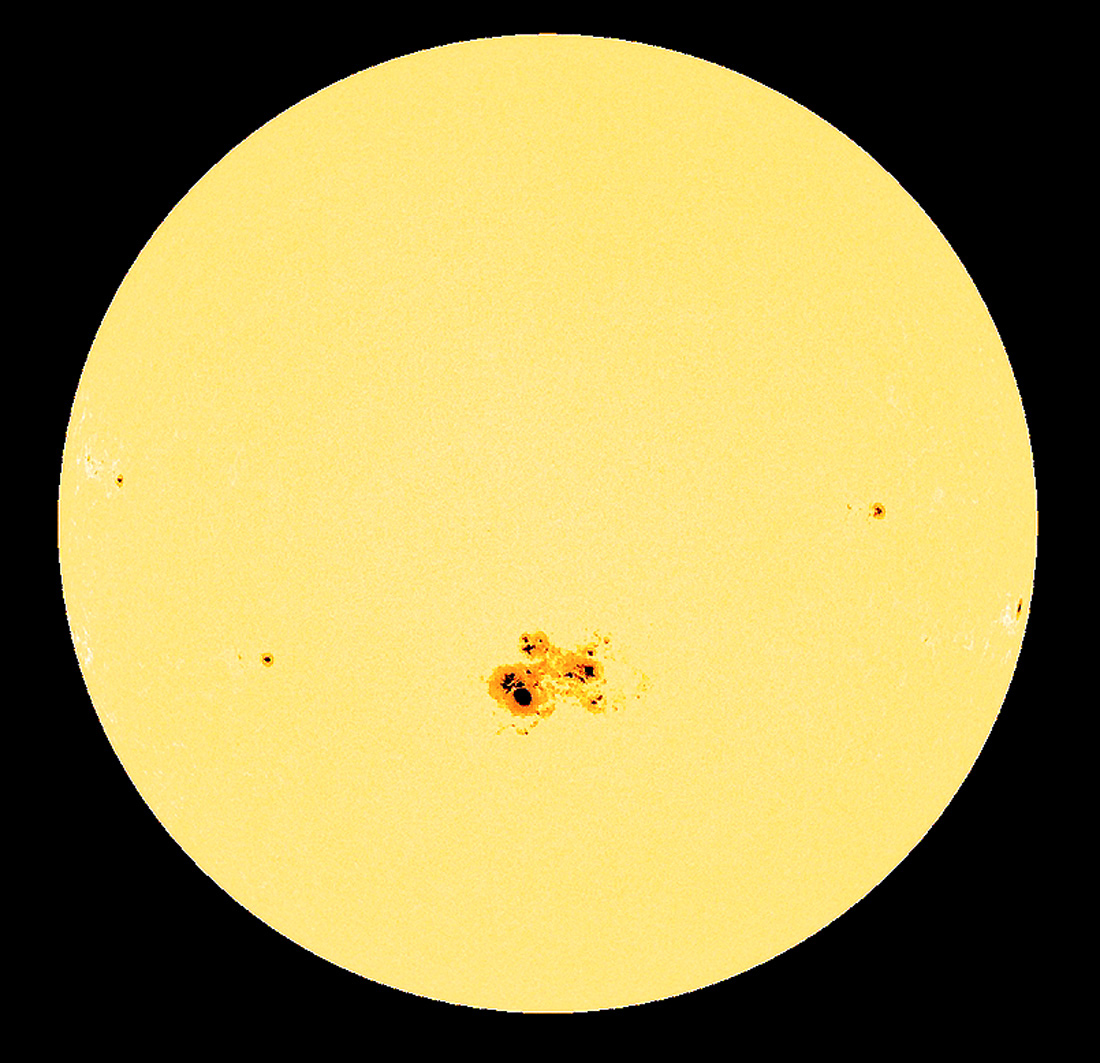An Annular eclipse occurs when the moon is in the portion of its orbit where it is farthest from the earth. This results in the apparent size of the moon’s disk being smaller than that of the sun, thus the moon cannot block out the entire solar disk. This results in a thin ring of the sun showing all around the moon. This ring of the sun’s photosphere gives more than enough light to sustain daylight, thus the sky does not become dark as it does during a total eclipse. Annular eclipses in the past few decades have occurred in 1984, 1994 and 2012.
A partial eclipse occurs when a part of the moon’s disk covers a portion of the sun’s disk. There is a partial phase at the start and end of every total eclipse and annular eclipse. These partial phases last about an hour each. If a total or Annular eclipse occurs, the eclipse is not called a partial, but is a total or annular, even though partial phases occur. What is referred to as a partial eclipse is when the moon’s umbral shadow cone (the dark inner cone) does NOT touch the earth. Only the penumbral shadow contacts the earth. This means that for the entire event there appears to be a bite out of the sun, but the size of that bite first grows and then shrinks, then the eclipse is over. There can be any percentage of the sun’s disk covered, as long as it is less than 100%. Some people on earth might see a 40% partial, while others in a different country might see a 10% eclipse, depending on where the penumbral shadow passes. A partial eclipse does not have the excitement of a total eclipse, and special glasses are required at all times, but they are an interesting phenomenon, They are also more common and visible over a much wider area than total eclipses, which means that many more people have seen a partial eclipse than have witnessed a total eclipse.
More old film photos of Annular and Partial eclipses than this are coming as they are scanned, digitized and uploaded! Unfortunately there were no digital images available in 1984, 1994 and before.
Gallery Slideshow Photos for Annular and Partial Eclipses:
*** NOTE: Click on “Show as Slideshow” to Display these Photos as a Slideshow at the Bottom of the Page. When the Slideshow Begins, place the Curser at the Bottom Center of the Photo to View the Slideshow Navigation Bar. The Title of each Slide is in the Center of the Navigation Bar. To Pause the Slideshow on a Photo, click on the Slide Number in the Navigation Bar. To Mute and Unmute the Music, click on the Speaker Icon that is Second from the Right. To Display the Slideshow in the Full Screen Mode or in a Smaller Window, click on the Display Icon at the Far Right End of the Navigation Bar. To end the Slideshow click on “Show Picture List”.***



































